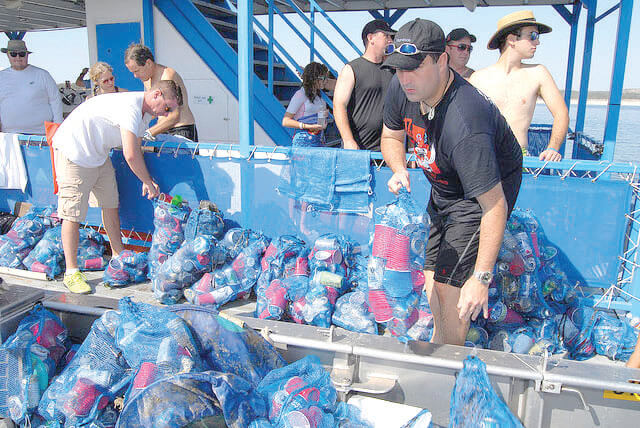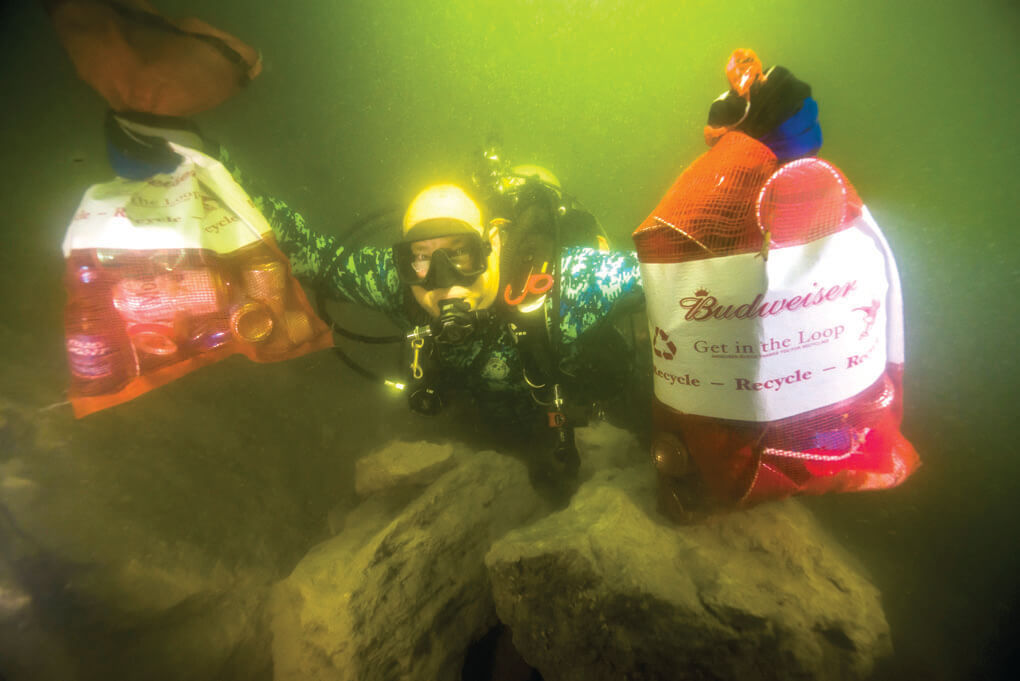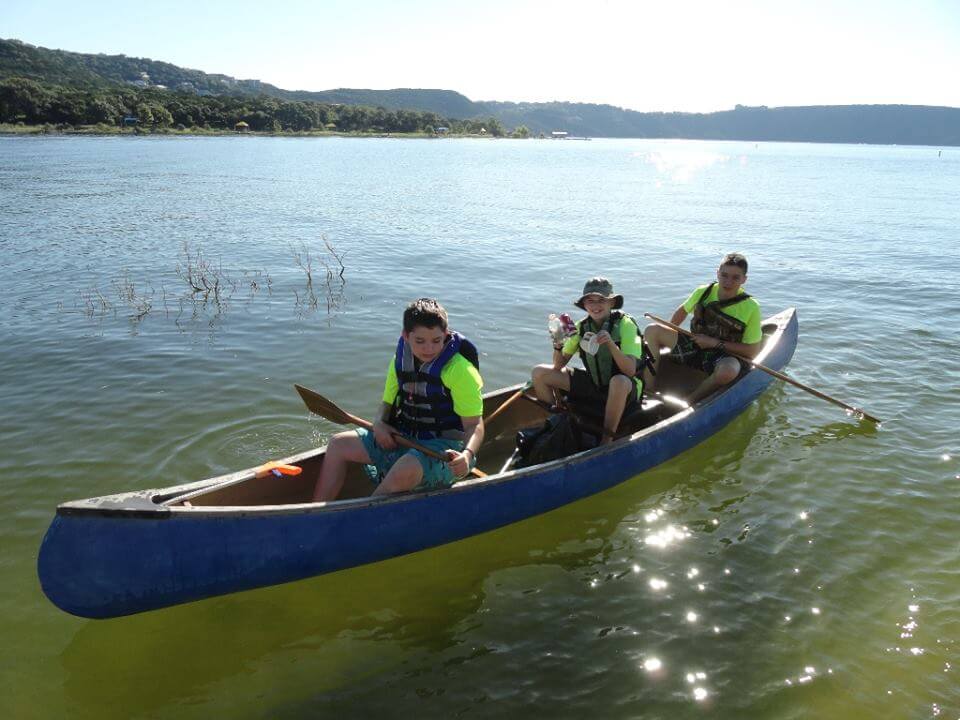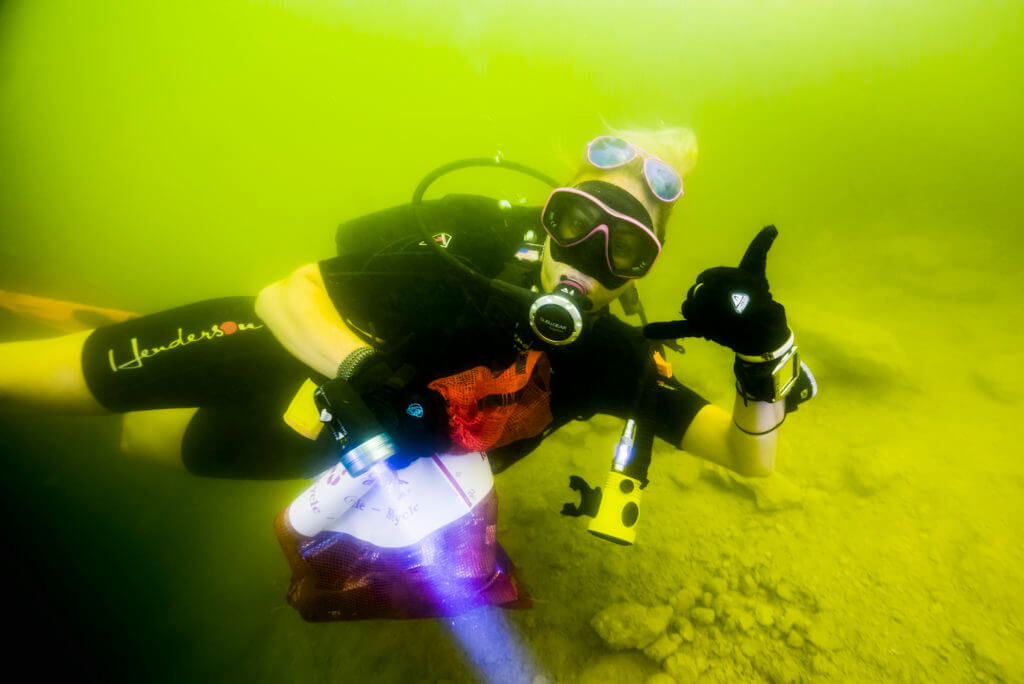By HARSHITA AVIRNENI
Four Points News
The 23rd annual Lake Travis Cleanup takes place Sunday, Sept. 17, and is the largest scuba diving and shoreline cleanup in Texas. It has been growing over the years since 1994 when it was originally founded by scuba divers, and to date 114 tons of trash has been collected.
“Lake Travis supports the greater Austin area through flood control, water supply, electrical power generation, and recreation,” said Shaun Auckland, conservation coordinator Travis County Transportation and Natural Resources. “This cleanup is a way for the greater community to demonstrate their deep connection to the lake by removing marine debris.”
Last year alone, 5.17 tons of trash was removed from Lake Travis during its annual cleanup. Common things such as plastic cups, glass beer bottles, and sunglasses make up most of this load.
Through the years, outrageous items like a prosthetic leg and a generator full with gasoline have been found.
“Lake Travis is a beautiful watershed we can all enjoy,” said Jennifer Idol, scuba diver and volunteer. “Over time, I’ve observed increased trash, decreases in wildlife population, and an increase in chemicals in our water. I want to leave a positive contribution. Helping improve some of these problems helps us continue enjoying our natural resources. It is something we can all do.”
 On average, around 1,000 volunteers contribute at this event every year. This includes the shoreline volunteers, the kayak/canoe volunteers, and scuba teams. Although most volunteer positions have been filled, there are still some openings at laketraviscleanup.org.
On average, around 1,000 volunteers contribute at this event every year. This includes the shoreline volunteers, the kayak/canoe volunteers, and scuba teams. Although most volunteer positions have been filled, there are still some openings at laketraviscleanup.org.
“The cleanup is important to me personally because as someone who works in the ecological field, I want all aspects of the lake and river system to function properly,” said Damien Kemper, volunteer. “We put Lake Travis here to use in a lot of ways. Nature has long since adapted to its presence. We need to take care of it, not just for us, but for the ecosystem it now supports.”
The Lower Colorado River Authority and the Colorado River Alliance became involved with this event a few years after it originally began to help facilitate boat support and proper waste disposal.
The Lake Travis Cleanup is now managed by the Colorado River Alliance, Keep Austin Beautiful, and Travis County to help raise public awareness of the importance of Lake Travis and the Highland Lakes while continuing the effort to make all the lakes cleaner.
“Every year, thousands of pounds of litter is introduced into Lake Travis by boaters, as well as shoreline park visitors,” said Durel Bernard, development director of the Colorado River Alliance. “By engaging Central Texans of all ages in cleanup work, we connect them to the lake and enable them to become stewards of the water. I would hope that this one day of volunteering will bring awareness and cause individuals to keep the lakes clean year-round.”
Since the program has began, more than 19,000 community volunteers of all ages have come together to remove over 108 tons of trash in Lake Travis.
“Our trash collection effort is the only regular maintenance of the trash accumulating on the bottom,” said Robert Weiss, scuba diver and volunteer. “It takes the effort of all lake users to maintain the water quality of a resource important to everyone. The lake is our water source, keep it just as clean as the land you walk on. Don’t mess with Texas and don’t trash Travis.”
For this event, there is even a post-cleanup celebration and lunch, with a DJ, t-shirts and door prizes to properly thank volunteers for doing such a great job with helping keep the lake fresh.
“The lakes in Austin are more than just the place we get the water we drink with, cook with, and bath in,” said Emily Wunder, volunteer. “They are part of the soul of our city, who we are. They reflect our beautiful skyline and the hills around us, they attract our bats, they bring people out from all backgrounds to enjoy a stroll along their shores. We are drawn to their tributaries, their shores, and their waters. They’re part of our history and future.”



